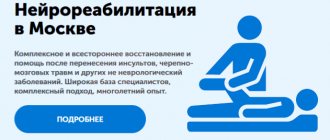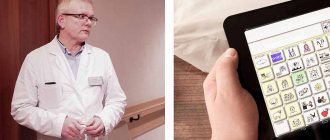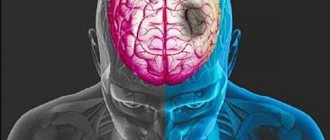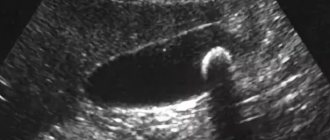Aphasia is a systemic speech disorder that occurs with organic lesions of the brain, covers different levels of speech organization, affects its connections with other mental processes and leads to disintegration of the entire mental sphere of a person.
Aphasia includes four components - a violation of speech itself and verbal communication, a violation of other mental processes associated with speech, a change in personality and personal reaction to the disease.
The causes of aphasia are cerebral circulation disorders (ischemia, hemorrhage), trauma, tumors, and infectious diseases of the brain. Aphasia of vascular origin most often occurs in adults. As a result of rupture of cerebral aneurysms, thromboembolism caused by rheumatic heart disease, and traumatic brain injuries, aphasia is often observed in adolescents and young adults.
The complexity of the speech disorder in aphasia depends on the location of the lesion. A.R. Luria distinguishes six forms of aphasia:
- acoustic-gnostic and acoustic-mnestic aphasia, which occurs when the temporal parts of the cerebral cortex are damaged,
- semantic aphasia and afferent motor aphasia, arising from damage to the lower parietal parts of the cerebral cortex,
- efferent motor aphasia and dynamic aphasia, which occur with damage to the premotor and posterior frontal parts of the cerebral cortex (on the left in right-handed people).
When speech zones are damaged, there is a violation of the so-called primary prerequisite that carries out the specific activity of the corresponding analyzer system. Based on the primary analytical disturbance, a secondary, also specific, collapse of the entire functional system of language and speech occurs, i.e. There is a violation of all types of speech activity: understanding speech, oral and written speech, counting, etc.
ACOUSTIC-GNOSTIC SENSORY APHASIA
This form of aphasia is characterized by impaired understanding of speech when perceiving it by ear. The basis of speech acoustic agnosia is a violation of phonemic hearing. Someone else's speech is perceived as an inarticulate stream of sounds. Inability to understand the speech of others and the absence of obvious motor disorders leads to the fact that patients do not always immediately realize that they have a speech disorder associated with a stroke or injury.
With sensory aphasia, the root lexical-semantic part of a word is difficult to catch by ear, resulting in a loss of its subject relevance. However, the categorical attribution of a word can be “perceived.” For example, hearing the word bell, the patient says: “It’s something small, but I don’t know what.” In patients with acoustic-gnostic sensory aphasia, auditory control of their speech is disrupted. Because of this, many literary and verbal paraphasias arise.
The patient’s early speech may be completely incomprehensible to others; it consists of random sets of sounds, syllables, and phrases, which is called “jargonophasis” or “speech hash.”
Due to a violation of phonemic perception, the repetition of words suffers a second time, and the rhythmic and melodic basis is lost. The period of jargonophasia lasts no more than 1.5 - 2 months, gradually giving way to logorrhea with pronounced agrammatism. In the study of the nominative function in sensory, acoustic-gnostic aphasia, along with correct naming, attempts are observed to explain the meaning of the word or find it through the phraseological context. For example, when naming an apple, it is said: “Well, of course, I know very well that it is a pear, not a pear, a sour apple,” etc.
When reading, many literary paraphasias appear, difficulty arises in finding the place of stress in a word, which makes reading comprehension more difficult. But reading remains the most preserved speech function in sensory aphasia.
Written speech is impaired to a greater extent and is directly dependent on the state of phonemic hearing. Severe counting disorders in sensory acoustic-gnostic aphasia are observed only at a very early stage.
Treatment
Treatment of amnestic-semantic aphasia must be comprehensive. In this case, one should not hesitate, since the sooner corrective measures are started, the greater the patient’s chances of restoring lost cognitive functions.
After a diagnostic examination and clarification of the severity of damage to the speech centers of the brain, specialists formulate an individual treatment plan. In drawing up a treatment plan, in addition to functional and organic disorders, the patient’s age and mental state play an important role. Both a neurologist and a psychotherapist must work with each patient to achieve maximum effectiveness from therapy. If a serious organic pathology is detected that requires immediate surgical treatment, for example, in case of brain injuries or tumor lesions, emergency or planned surgical intervention is performed to eliminate the life-threatening condition and minimize cognitive impairment in the future.
Step-by-step rehabilitation
Restoring cognitive abilities is a rather long stage, requiring motivation and effort, both from the patient himself and from his relatives.
The rehabilitation period occurs individually for each patient and depends on many factors. However, a properly formed step-by-step plan can speed up recovery efforts.
At the initial stage, the victim is re-taught to adequately perceive objects and imaginative thinking. The patient constantly works with pictures of objects, then with groups of objects with a gradual complication of the visual series.
The second stage is to form adaptation to situational speech. The maintenance of speech function on certain topics is formed. At this stage, the patient requires the help of a speech therapist and psychotherapist, since it is the most difficult.
At the final stage, the patient expands his reserve of speech and auditory perception, and also learns to reduce the intervals between spoken phrases and sentences. A gradual increase in the volume of perceived information finally leads to adaptation of a person with aphasia.
With a systematic approach to rehabilitation exercises, most patients manage to achieve lasting positive results, which allows the victim to adapt to a normal social environment.
Clinical Brain Institute Rating: 4/5 — 3 votes
Share article on social networks
ACOUSTIC-MNESTIC APHASIA
Acoustic-mnestic aphasia occurs when the middle and posterior parts of the temporal region are damaged. It is believed that it is based on a decrease in auditory-verbal memory, which is caused by increased inhibition of auditory traces. Acoustic-mnestic aphasia is characterized by a dissociation between the relatively intact ability to repeat individual words and the impaired ability to repeat three or four unrelated words (for example: hand-house-sky, etc.)
In acoustic-mnestic aphasia, speech memory impairment is the main defect, because phonemic hearing and the articulatory side of speech are preserved. Increased speech activity compensates for communication difficulties. The auditory verbal memory of these patients is characterized by great inertia.
Violation of the volume of retention of speech information, its inhibition leads to difficulties in understanding in this form of aphasia long, polysyllabic statements consisting of five to seven words. Patients find it difficult to navigate a conversation with two or three interlocutors, “switch off” in a difficult speech situation, cannot attend reports, lectures, and get tired when listening to music and radio broadcasts. This fact should be taken into account when prescribing such treatment methods as “art therapy”, etc.
With optical aphasia, the second variant of acoustic-mnestic aphasia, difficulties arise in retaining the semantic aspect of speech by ear; they consist in weakening and impoverishment of visual representations of an object, in the relationship between what is perceived by ear and its visual representation. The visual representation of an object becomes incomplete; those elements of objects that, on the one hand, are specific to them, and on the other hand, are associated with the polysemy of the word (for example, the words spout, comb, pen) are not completed.
Patients understand the meaning of individual words. They do not have articulatory difficulties, they are not only verbose, but also hyperactive. However, with all this, they only partially understand speech due to the narrowing of auditory-verbal memory to 1-2 out of 3 words perceived by ear. Speech is abundant, little informative, replete with verbal paraphasias, but intonation-colored.
In written speech with acoustic-mnestic aphasia, the phenomena of expressive agrammatism appear more prominently, i.e. displacement of prepositions, as well as inflections of verbs, nouns and pronouns, mainly in gender and number. The nominative side of written speech turns out to be more preserved. When recording text from dictation, patients experience significant difficulties in retaining even a phrase in their auditory-verbal memory. Consisting of three words, they are asked to repeat each fragment of the phrase.
With acoustic-mnestic aphasia, it is difficult to perceive printed text when reading. This is due to impaired preservation of auditory-verbal memory.
SEMANTIC APHASIA
Semantic aphasia occurs when there is damage to the overlap area of the three lobes of the cerebral cortex - parietal, occipital and temporal. Speech disorders of the amnestic aphasia type are based on the collapse of the semantic structure of the word, the impoverishment of the near and far connections of the word.
Semantic aphasia is combined with pronounced spatial-constructive apraxia and apraxia of finger posture. Patients with semantic aphasia retain their understanding of elementary phrases that convey “communication of events,” for example: “The children are going into the forest. They will collect mushrooms. They should return home by evening." Such phrases can consist of 7-11 elements and can be easily understood by patients with this form of aphasia.
Patients understand well the meaning of individual prepositions, freely place a pencil under a spoon or a spoon to the right of a fork, but cannot place three objects. Patients cannot navigate comparative phrases like “Kolya is taller than Misha and shorter than Vasya.”
Difficulties arise with semantic aphasia in solving logical-grammatical phrases that convey communication of relationships such as “father’s brother” - “brother’s father,” etc.
Patients also find it difficult to understand complex syntactic structures expressing cause-and-effect, temporal and spatial relationships, adverbial and participial phrases. They do not understand metaphors, proverbs, sayings, popular words, and the figurative meaning is not found in them.
Expressive speech is articulatory preserved, there are no literary paraphasias, there is no pronounced agrammatism, but in written and oral speech patients do not use complex lexical complexes, which is why the vocabulary becomes semantically poor. Poverty of vocabulary is expressed in the rare use of adjectives, adverbs, descriptive phrases, participial and participial phrases, proverbs, sayings. There is no semantic intonation in speech.
Written speech is distinguished by its poverty, stereotypical syntactic forms, and there are few complex, complex sentences in it. The use of adjectives is reduced. Gross violations of counting operations are often observed. Patients confuse the direction of action when solving multi-digit arithmetic examples, they experience certain arithmetic difficulties when working with the transition through ten, and have difficulty writing multi-digit numbers by ear.
AFFERENT MOTOR APHASIA
Afferent motor aphasia occurs with damage to the secondary zones of the postcentral and inferior parietal parts of the cerebral cortex, located posterior to the central or Rolandic sulcus.
There are two types of this aphasia. The first type of aphasia is observed with damage to the postcentral parts of the left hemisphere in both right-handers and left-handers, and is characterized by a complete loss of expressive speech. The second type of aphasia is observed in persons who were retrained in preschool and primary school age from the left hand to the right.
In the first variant of afferent kinesthetic motor aphasia, severe apraxia of the articulatory apparatus can lead to a complete absence of spontaneous speech. Attempts to arbitrarily repeat sounds lead to chaotic movements of the lips and tongue and literary substitutions. Patients split a closed syllable into two open ones, split up consonant clusters in a syllable, and omit consonant sounds. And at the same time the words here, there, here, etc. sound like tu-t, ta-t, vo-t, etc.
In the process of complex treatment of patients after a stroke at the Vremena Goda clinic, there is a rapid restoration of understanding of situational conversational speech, understanding of the meanings of individual words, and the ability to follow simple instructions. Patients have been experiencing specific features of impaired understanding for a long time. This is due to secondary phonemic hearing impairment. With this form of aphasia, difficulties arise in recognizing by ear words with sounds that have common features in the place of words with sounds that have common features in the place and method of articulation (rough - front-lingual, sonorant - vowels, etc. There are difficulties in understanding lexical means languages that convey various complex spatial relationships.
Difficulties in understanding are caused by verbs with prefixes (wrap, return, etc.), in understanding the meanings of personal pronouns used in indirect cases, which is explained by the lack of subject orientation in them, the abundance of phonemic changes (for example, me-me-me).
Reading and writing disorders depend on the severity of apraxia of the articulatory apparatus. In the process of neurorehabilitation in our clinic, the restoration of internal reading often precedes the restoration of written speech. When writing words under dictation, when naming objects in writing, when trying to communicate in writing with others, all articulatory difficulties affect themselves, i.e. There are numerous literary paragraphs reflecting a mixture of vowel and consonant phonemes that are close in place and method of articulation; consonants (sonorant) are omitted.
In the second variant of afferent motor aphasia, patients have difficulty maintaining the order of letters in a word, imagining their mirroring, skipping vowels, or writing all the consonants first, and then the vowels, and they retain the idea of the presence of a sound in a word, for example, skipping the letter “е” ", in the word "leads", the patient puts two dots over the "d".
EFFERENT MOTOR APHASAIA
When the premotor zone is damaged, efferent motor aphasia occurs. The linear, temporary organization of movement is carried out by the premotor areas of the cerebral cortex. In case of damage to the secondary fields of the nuclear zone, motor skills are disrupted; while individual movements are preserved, motor persistence occurs. When different parts of the frontal lobes are disturbed, inactivity, persistence, duration of pause in activity occur, mental and motor processes lose their smoothness, “dynamic” or “kinestatic” replacement of one movement or action by another. The smoothness and melody of not only movements, but also speech disappears.
Several patients undergoing neurorehabilitation after a stroke at the Vremena Goda clinic, among other disorders, had motor aphasia with pathological inertia of speech stereotypes, leading to sound, syllable, lexical rearrangements and repetitions. This was explained by the impossibility of timely switching from one articulatory act to another; such violations make it difficult, and sometimes completely impossible, to speak, write, and read.
The sound structure of syllables in efferent motor aphasia is not simplified or destroyed, but loses its intonation coloring and becomes stringy and monotonous. Literal paraphasias are not typical for the oral speech of patients with efferent motor aphasia, but there are many of them in written speech.
Impaired reading and writing are characteristic of efferent motor aphasia. Recording a word or phrase is possible only when pronouncing the words syllable by syllable. Perseverations of letters from previous words and perseverations of the same syllable are frequent. At the later stages of recovery, when independently compiling a text based on a series of paintings, agrammatism is revealed, and inflections, both case and indicating gender, are mixed. In severe cases, reading is guessing in nature.
Prognosis and prevention
Speech therapy correction of this disorder takes a lot of time. Not only the doctor, but also the speech therapist and the patient’s relatives should take part in it. The earlier treatment is started, the greater the chances of success. How much the patient’s speech will be restored depends on the size and location of the affected area in the brain, age and other factors that were described above.
Most often, young patients recover. But, if this diagnosis was made to a 5-7 year old child, then speech may be completely lost, or the prognosis is a severe violation of speech development. Motor aphasia can end spontaneously in patients of any age, turning into stuttering.
Preventive measures include timely diagnosis of brain tumors and their adequate treatment; in the prevention of traumatic brain injuries, in the prevention of cerebrovascular accidents.
DYNAMIC APHASAIA
This aphasia occurs when there is damage to the posterior frontal parts of the left, speech-dominant hemisphere, the block of activation, regulation and planning of speech activity. And dynamic aphasia is characterized by the main speech defect - this is the difficulty, and sometimes the complete impossibility, of actively developing a statement. We can say that the basis of dynamic aphasia is a violation of the internal programming of the utterance, manifested in the difficulties of its planning when composing individual phrases.
Dynamic aphasia is based on a violation of spontaneous, detailed utterance. When retelling a plot picture, separate, unrelated fragments are pronounced, and the main semantic links are not highlighted.
Pseudo-amnestic difficulties may be observed when naming objects, especially when remembering the names of familiar people, names of cities, etc. The hint of the first syllable of a word can be a trigger that releases the inertia of the speech search for words. Significant difficulties are experienced when asked to perform a reverse ordinal count. For example, from ten to one.
Dynamic aphasia is characterized by intact reading and writing. Elementary counting in dynamic aphasia remains intact, but with this aphasia the solution of arithmetic problems that require the construction of an action plan is sharply impaired.
Organic lesions of the motor parts of the central nervous system caused by stroke (ischemic stroke, hemorrhage) contribute not only to speech impairment in the form of aphasia, but also to such speech disorders as dysarthria.
When to sound the alarm?
It is necessary to sound the alarm and conduct a thorough diagnostic examination when observing the following three indicators if:
There is a gradual deterioration of language (not just speech). The language problem is initially the only deficiency. The main cause is a neurodegenerative disease.
A distinctive feature of the semantic variant of aphasia is the progressive loss of word meanings. If there are additional severe problems in identifying objects or persons, the condition is also called semantic dementia.
Other language skills, including the ability to produce speech and repeat phrases and sentences spoken by others, are not affected. However, although the affected person may continue to speak freely, their speech becomes unclear and difficult to understand because many words are omitted or replaced.
Language problems increase over time. There is a slow but progressive loss of vocabulary and the ability to understand what people say. Speech becomes increasingly vague and the amount of speech tends to decrease.
In the future, non-linguistic functions are disrupted during the disease. In particular, a person may find it increasingly difficult to recognize familiar people or household objects. Problems associated with carrying out normal daily activities are also increasing.
DYSARTHRIA
Dysarthria is a violation of the pronunciation side of speech, caused by a violation, insufficiency, of the innervation of the speech apparatus.
Clinical forms of dysarthria are determined depending on which part of the motor system is affected. In all forms of dysarthria, sound pronunciation is impaired due to inaccurate motor installation for reproducing phonemic features. The intelligibility of pronunciation decreases due to increased salivation and the appearance of characteristic squelching sounds. The prosodic characteristics of speech are also impaired.
Depending on the location of the lesion, bulbar, pseudobulbar, extrapyramidal, cerebellar and cortical forms are distinguished. Topical classification of dysarthria according to E.N. Vinarskaya.
Bulbar form of dysarthria
Caused by damage to the nuclei, roots or peripheral trunks of the cranial nerves located in the medulla oblongata. With such lesions, flaccid paralysis develops in the muscles of the speech organs, leading to the loss of any movements - voluntary and involuntary. Due to the fact that the lesion may be focal in nature, the actions of certain muscles are therefore excluded from the act of pronunciation. Restricted muscle movement leads to persistent pronunciation problems. With the most severe disorders, the range of pronounced sounds can be narrowed to 2-3. Additional overtones appear in the speech of patients, caused by the disorder due to additional muscle tension. Speech intelligibility suffers in proportion to the severity and prevalence of paralysis and paresis in the oral region. Both voluntary and involuntary movements are impaired. There is vagueness, muffled sound pronunciation, and nasalization of sounds.
Pseudobulbar form of dysarthria
Occurs when the pyramidal tracts are damaged in the area from the cortex to the medulla oblongata. With this localization of the lesion, spastic paralysis with impaired control of voluntary movements is characteristic. Highly automated movements, regulated at the subcortical level, are preserved. In speech, sounds that are complex in articulation and require more precise muscle movements are selectively affected. Increased tone of the muscles of the tongue and pharynx, limited movement of the lips and tongue, drooling, and oral synkinesis are detected. Speech is monotonous, blurred, voice is unmodulated.
Extrapyramidal dysarthria
It is a consequence of damage to the extrapyramidal system. Control of muscle tone is impaired. Dystonia occurs and the most characteristic symptoms are hyperkinesis. Hyperkinesis manifests itself in the form of rhythmic muscle contractions (choreic hyperkinesis) and wave-like movements (athetoid hyperkinesis). Hyperkinesis intensifies as the movement becomes more complex and the level of its arbitrariness increases. Therefore, with extrapyramidal dysarthria, disorders in the pronunciation of articulatory complex sounds and pronounced disturbances in the prosodic components of speech are observed.
Cortical dysarthria
Consequence of focal lesions of the motor areas of the cerebral cortex. Characteristic disorders include disorganization of complex motor skills. The hierarchical structure of movements disintegrates, and all its elements are essentially equalized. There is no fluency of speech, there may be salivation.
Cerebellar dysarthria
Occurs when the cerebellum or its pathways are damaged, speech is slow, jerky, and scanned. Reduced tone and mobility of the tongue muscles. Severe disturbances in the tempo and fluency of speech.
Diagnostics
Amnestic aphasia is a disease that lies at the intersection of two areas: neurology and psychology. Since aphasia is characterized by various disorders of the cognitive function of the brain, such disorders cannot but be accompanied by mental defects. Neuropsychological diagnostic methods are used to identify amnestic aphasia. To verify the disease and clarify the degree of impairment of the functional activity of the speech apparatus of a sick person, they resort to the use of special tests. Typically, such tests use a variety of objects with varying degrees of difficulty in pronouncing their names. There are also tests of a descriptive nature, when the patient is told about the characteristics of an object and see if the patient can answer with hints. A number of tests determine the connection between speech and visual manifestations, for example, the patient is sequentially shown several objects belonging to the same category; if the patient does not respond, then he has a violation of the connection between speech function and visual images, which can be interpreted in favor of sensory-amnestic aphasia.
In addition to special neurological and psychological tests, each patient is required to undergo laboratory and instrumental research methods. Depending on the cause of aphasia, diagnostic methods will be more or less informative.
The Clinical Brain Institute has a high-tech diagnostic department, which can conduct research such as:
- Tomographic studies: computed tomography and magnetic resonance imaging with and without contrast;
- X-ray examination of the skull and brain to identify defects;
- Ultrasound sonography and Doppler mapping of neck vessels;
- Comprehensive laboratory diagnostics.
In addition to high-quality equipment, a specialist is no less important for diagnostic purposes. The diagnostic department employs highly qualified specialists certified in related fields of medicine, which increases the efficiency of the diagnostic search and subsequent treatment of each individual patient.








